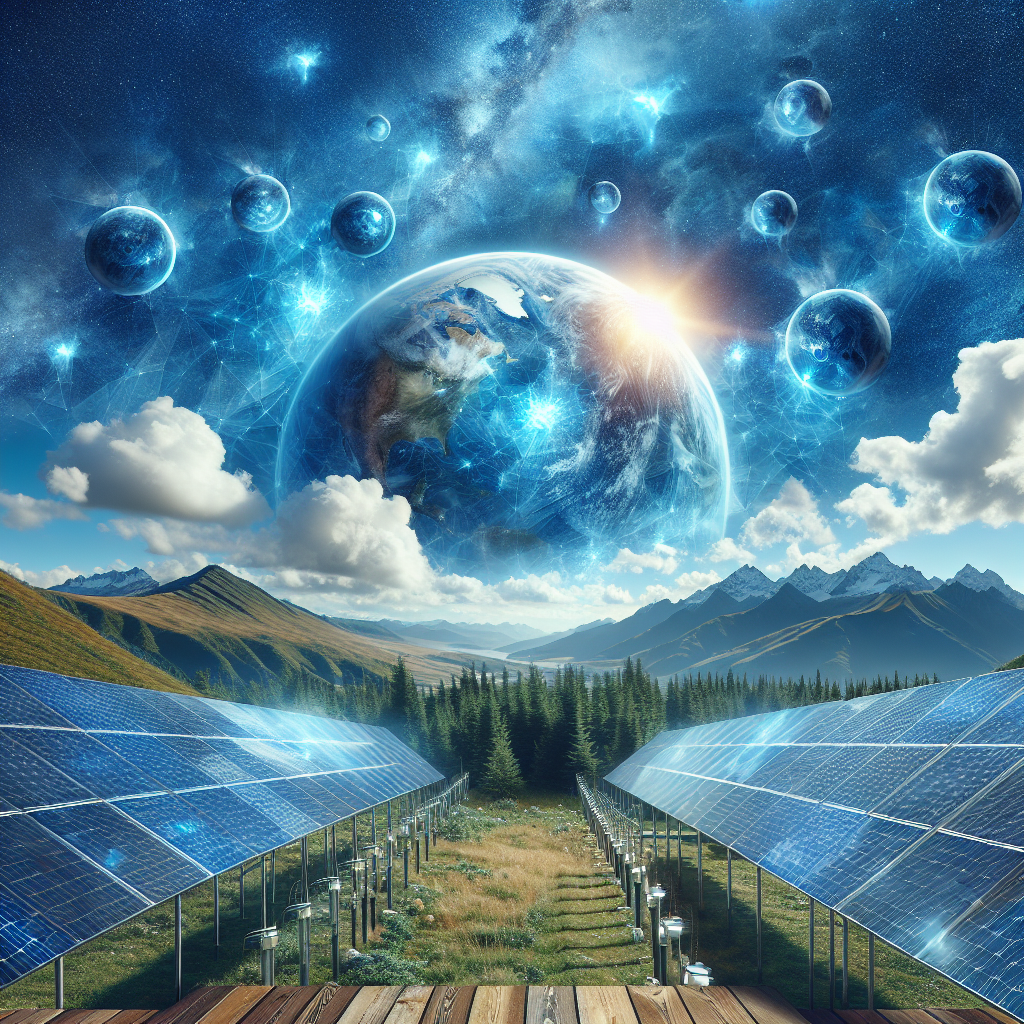Harnessing the Power of Solar Energy for a Sustainable Future
The harnessing of solar energy is a crucial aspect of the transition towards a sustainable future. As the world seeks alternative sources of energy, solar power has emerged as a leader in the renewable energy sector. Solar energy is derived from the sun’s radiation and can be converted into electricity or used for heating and cooling. The abundance of solar energy potential makes it an attractive option for countries aiming to reduce their reliance on fossil fuels and mitigate the impact of climate change.
In recent years, advancements in solar technology have led to increased efficiency and cost-effectiveness, making it more accessible for both residential and commercial use. The installation of solar panels on rooftops and in solar farms has become a common sight, showcasing the widespread adoption of this clean energy source.
Furthermore, the decentralized nature of solar power empowers communities to generate their own energy, reducing dependence on centralized utilities. This not only fosters energy independence but also creates opportunities for local economic development.
It is evident that harnessing the power of solar energy holds tremendous potential in paving the way for a sustainable future. With ongoing innovations and supportive policies, solar energy is set to play a pivotal role in meeting the world’s growing energy demands while minimizing environmental impact.
The Potential of Wind Energy in Creating a Greener Tomorrow
Wind energy has emerged as a crucial component in the global transition towards sustainable and renewable energy sources. With advancements in technology and growing investment, wind power has become a key player in the quest for a greener tomorrow. The potential of wind energy in creating a sustainable future is vast, offering a clean and abundant source of power with minimal environmental impact. By harnessing the natural power of the wind, we can significantly reduce our reliance on fossil fuels and mitigate the harmful effects of traditional energy production on the environment.
One of the most compelling aspects of wind energy is its scalability and versatility. Wind turbines can range from small-scale applications for residential or rural use to large utility-scale wind farms. This adaptability makes it possible to integrate wind power into diverse settings, both onshore and offshore, further maximizing its potential to meet energy demands across the globe. Additionally, the ongoing innovation in turbine design and efficiency continues to enhance the viability of wind energy as a sustainable alternative.
In addition to its environmental benefits, wind energy also presents economic opportunities. The expansion of wind power projects creates jobs, stimulates local economies, and reduces reliance on imported energy resources. Furthermore, as the industry matures, the cost of wind energy has become increasingly competitive with traditional fossil fuel-based power generation, making it an attractive option for both investors and energy consumers.
As the world aims to curb carbon emissions and combat climate change, the role of wind energy in the transition to sustainable power sources cannot be overstated. By harnessing this clean and renewable resource, we can pave the way for a more sustainable and environmentally conscious future, reducing our carbon footprint and ensuring a greener tomorrow for generations to come.
Innovations in Hydroelectric Power: A Promising Path to Renewable Energy
Hydroelectric power has been a significant player in the renewable energy sector for many years, and recent innovations have further solidified its place as a promising path to sustainable energy. The advancements in hydroelectric power technology have paved the way for greater efficiency and environmental friendliness in harnessing energy from water sources.
One of the most notable innovations in hydroelectric power is the development of new turbine designs that are capable of capturing energy from lower-flow water sources, making it possible to generate electricity in areas that were previously unsuitable for traditional hydroelectric dams. These low-impact hydroelectric systems are particularly advantageous in their ability to minimize disruptions to ecosystems and local communities.
Furthermore, the integration of smart grid technologies has enhanced the flexibility and reliability of hydroelectric power, allowing for better integration with other renewable energy sources such as solar and wind. This integration contributes to a more stable and resilient renewable energy infrastructure, addressing the intermittency challenges often associated with solar and wind power.
Additionally, the use of pumped-storage hydroelectricity has gained momentum as a means to store excess energy generated during periods of low demand, providing a valuable solution to the intermittency issue. By pumping water to a higher reservoir during off-peak times and releasing it to generate electricity during peak demand, this innovative approach helps balance the grid and improve energy efficiency.
As the demand for clean energy continues to rise, innovations in hydroelectric power play a crucial role in shaping a sustainable future. With ongoing research and development efforts, hydroelectric power is poised to further optimize its potential as a reliable, low-carbon energy source, contributing significantly to the global transition towards a more sustainable energy landscape.
